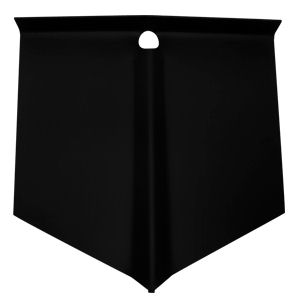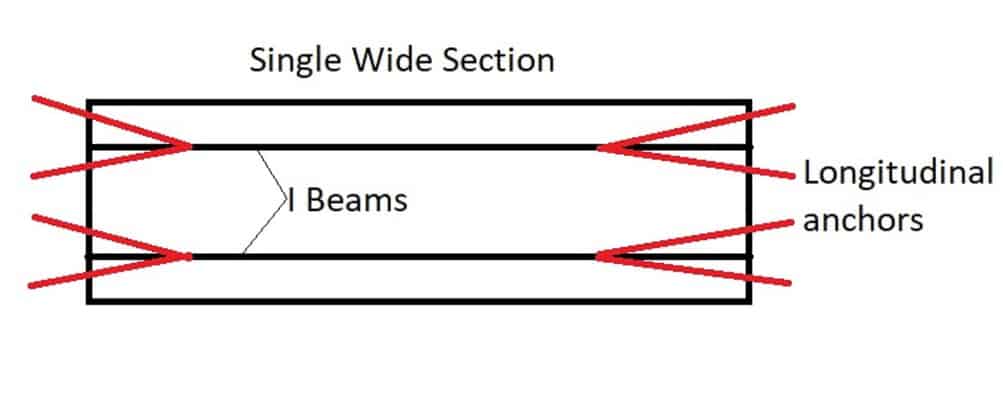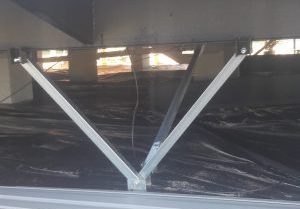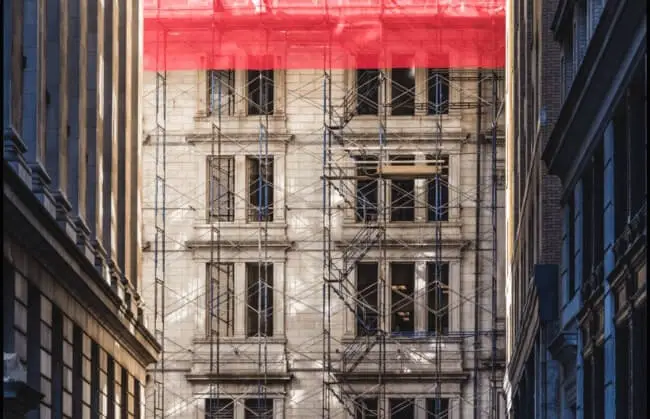What Are Longitudinal And Lateral Stabilizer Devices?
Table of Contents
Following a string of hurricanes in Florida during the 1980s and 1990s caused extensive damage to many structures including mobile homes. Investigations were carried by the Florida DHSMV to determine why the current anchor systems had failed. Up to that point anchors were tied to the I beams on the side of the home only by looping the strap around a steel beam. Here is detail about Longitudinal And Lateral Stabilizer Devices.
It was discovered that during a hurricane, in most cases the homes did not lift off the piers, (uplift), but rather moved sideways or lengthways until the home fell off the blocks. The mobile home structure moving only 4-5 inches in any direction caused a catastrophic failure of the anchoring system.
New ideas were needed to stop excessive lateral and longitudinal movement due to wind loads.
Improvements To Mobile Home Stabilizers Since 1997.
The first thing to note was that the anchors would not come out of the ground but the anchor shaft would cut through the dirt. So although the anchors stayed in the ground, the shaft allowed the home to move in the direction of the wind load.
To fix this stabilizer plates were designed to increase the surface area of the anchor shaft. These plates increased the shaft surface area by 180 square inches. This would prevent the shaft from cutting through the ground so easily.

Longitudinal Anchors With Plates.
The next improvement was the addition of anchors and plates to the end of the mobile home. These anchors help to prevent any movement caused by end wall wind loads. Four of these extra anchors are required at the end of each mobile home floor section. Single wide mobile homes will require a total of 8 longitudinal anchors while a double-wide home will require 16 anchors to be installed.
These longitudinal anchors have been required on all new and used setup permits since 1997.

Used homes that do not meet certain requirements are required 2 have longitudinal anchors and plates installed each side of the end of each “I” beam. Gator clamps are used to connect straps to the beam. Each anchor requires a stabilizer plate.
Must Read: How To Install A New Mobile Home Anchor – Full Instructions
New Longitudinal and Lateral Anchoring Systems.
The older systems above systems do work but they involve more expense, more time and more labour. In recent years new technology has been used to design simpler, more effective systems that are easier to install. These are called stabilizer systems. These systems are designed to prevent the home from moving when exposed to strong wind on the ends or sides of the mobile home.

How To Install These Stabilizer Systems.
In the picture above the system, steel arms are attached to a large steel plate which is buried into the ground. The short arms (left and right), are connected to the outside I beam using gator clamp brackets. The Longarm to the rear is connected to the top of the inside I beam by a steel bracket. The 3/4″ bolts and brackets come as a complete system for ease of use.
These devices are installed on new homes and used homes that have been moved to a new location. They can also be added to an existing home to enhance the anchoring system. For crews working on new homes, these stabilizer systems have been a great time saver and have eliminated a lot of extra materials.
How Do These Stabilizers Work To Secure My Home?
There are several types of approved systems made by tie-down supply manufacturers. They all look slightly different but work on the same principle. If a wind force is applied to the ends or side of the home in a hurricane for instance. The struts push the large steel base plate further into the ground acting as an anchor. This prevents further lateral and longitudinal shifting of the home, preventing anchor failure.
Do I Need Stabilizer Devices On My Mobile Home?
It is recommended that all homes have some sort of longitudinal and lateral devices installed to prevent sideways and lengthways movement which would cause the tie-down system to fail. If you live in an area that is susceptible to high winds then I would definitely look into having systems installed.
Strong winds from a hurricane or severe storm expose the sides of the mobile home structure to excessive lateral or longitudinal forces.
So What are My Stabilizer Options?
New Home Installations.
There are several answers to this question depending on where you have them located and whether your mobile home is new or used. Homes installed prior to 1997 in Florida do not have the new systems installed. New homes in Florida are required to have longitudinal stabilization but not necessarily specific devices.
There are alternate methods that are in use and that comply with the state requirements in Florida 15-c.
Used Home Installations.
Used homes are required to have longitudinal devices or anchors attached when installed. The type of stabilization will depend on the year of manufacture and whether side wall straps are installed. According to Florida code stabilizer devices can only be installed on homes with sidewall straps attached every 5 foot 4 inches installed at the factory.
Adding Stabilizer Systems To Existing Installations – Retrofitting.
Most mobile homes older than 1997, would benefit from the addition of stabilizer systems. Many of the older homes have rusty anchors and broken straps that are really doing nothing to prevent extensive damage in a storm. Check out the condition of your mobile home anchors on an annual basis and make the necessary repairs.
The addition of 2 longitudinal systems to opposite diagonal corners of your home will do a lot to enhance the overall tie-down system of your home. We call this retrofit an “enhancement” because most of the time it is not possible to bring an anchoring system up to the current code on an older home.
FHA Anchor And Stabilizer Upgrades.
The Federal Housing Association mandates stabilizer devices be installed on all of their applications for assistance. They usually send an engineer to the property who produces a detailed status report for the homeowner. They usually will require systems to be installed by a licensed installer.
Contact us here if you have such a requirement. We are in regular contact with the local engineers and can take care of the paperwork and the enhancements to your home.
New Home Stabilizer Systems.
Homes that have the required number of sidewall vertical ties need to have stabilizer devices installed. You should refer to the manufacturers’ detailed information brochure included in each system. Usually, double-wide homes under 52 ft will require four complete systems. However, homes over 52 ft will require six complete systems. Complete system refers to the use of both long and short arms.
Other situations that may require more systems relate to:
- Roof pitches of over 3:12.
- Side walls higher than 9 feet.
- Wind zone 3 applications.
- Exposure “D” applications.
Only devices manufactured to State requirements and appearing on the approved product list will be allowed. Refer to your state building codes for further information.
When it Comes to Stabilizers Mobile Home Size Matters.
The number and location of these devices will depend upon 3 things:
- Firstly the length of the home.
- Secondly the width of the home.
- Thirdly the pitch of the roof.
Conclusions.
If you require any help or advice about Mobile Home Longitudinal And Lateral Stabilizer Devices send us a message on the contact page or give us a call on 863 808 2200

